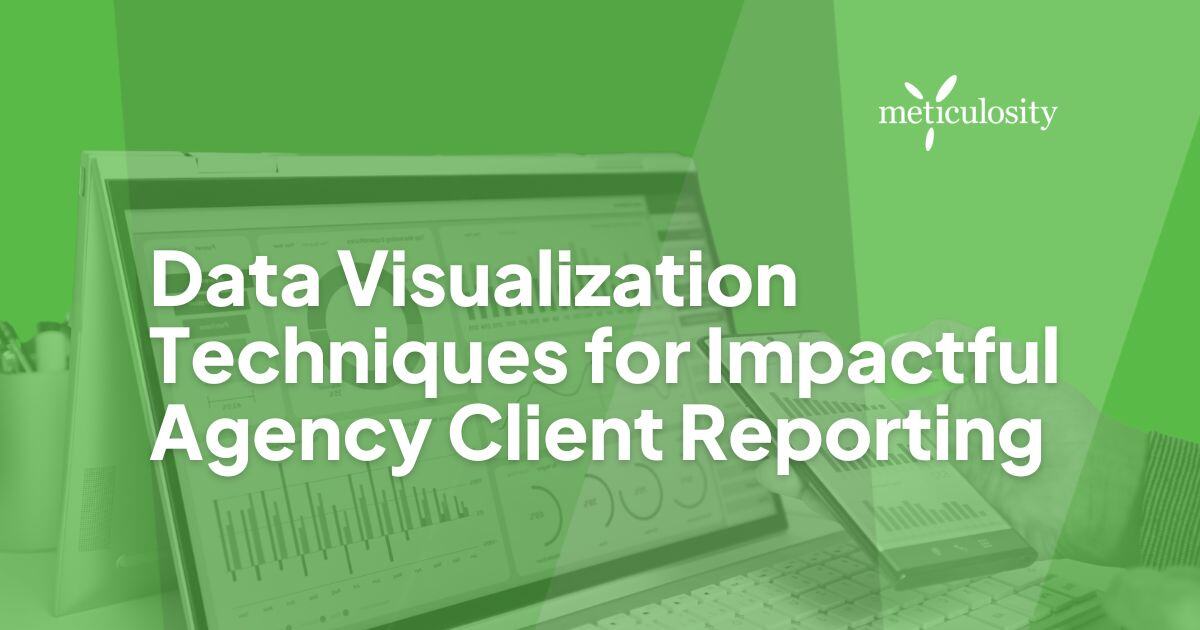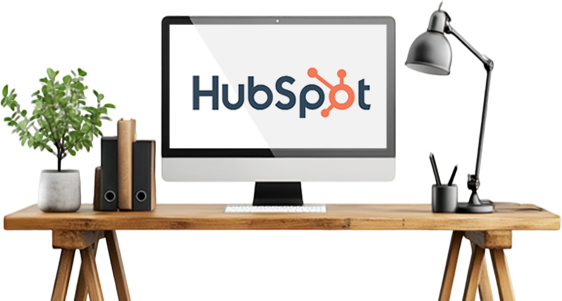Clear and compelling reporting is crucial. Clients want to see results, but raw data can be overwhelming and difficult to interpret. This is where data visualization comes in. Well-designed visual reports make complex information digestible, enabling clients to quickly grasp insights and make informed decisions.
In this guide, we’ll explore key data visualization techniques that enhance client reporting, ensuring your agency’s presentations are both insightful and actionable. By leveraging effective visualization, agencies can strengthen client relationships and showcase the true impact of their efforts.
Need expert support in refining your client reporting strategy? Discover how Meticulosity's white-label services can help.
The Importance of Data Visualization in Client Reporting
Data visualization plays a vital role in transforming numbers into narratives. It helps bridge the gap between raw data and meaningful insights. Without effective visuals, even the most valuable data can lose its impact.
Clear visualization enhances clarity, ensuring that clients can quickly understand key takeaways without having to sift through extensive numerical tables. Engaging visuals hold client attention, making reports more interactive and easier to digest. Furthermore, well-structured data presentations provide a solid foundation for decision-making, enabling clients to take informed actions based on the trends and patterns observed.
Additionally, visual representation reduces the risk of misinterpretation. With raw data, miscommunication is common, but with properly designed visuals, clients can easily grasp the context and significance of the numbers presented.
Choosing the Right Data Visualization for Your Report
Not all data visualizations serve the same purpose. Selecting the right type of chart, graph, or infographic depends on the data being presented and the insights you want to highlight.
Bar and Column Charts
Bar and column charts are ideal when comparing data across different categories or time periods. These visualizations are particularly useful for tracking campaign performance, revenue growth, or customer acquisition trends over multiple months or years.
Line Charts for Trend Analysis
When showcasing trends over time, line charts are among the most effective tools. They help illustrate patterns such as website traffic growth, ad impressions over a campaign duration, or seasonal fluctuations in sales.
Pie and Donut Charts for Proportions
For visualizing proportions and percentage distributions, pie and donut charts work well. These are particularly useful when displaying market share, customer segmentation, or the proportion of traffic sources in a marketing campaign.

Heatmaps for Engagement and Performance Analysis
Heatmaps are excellent for identifying high and low engagement areas. They are commonly used in website user behavior analysis, where color variations indicate frequently clicked areas versus those receiving little attention. This helps clients understand user interactions and make informed design improvements.
Scatter Plots and Bubble Charts for Correlations
Scatter plots and bubble charts are great for illustrating relationships between variables. For example, these charts can highlight the correlation between ad spend and conversion rates, revealing whether increased budget allocation results in higher returns.
Tables vs. Infographics
While tables allow detailed comparisons and precise numerical data presentation, infographics are better suited for summarizing information in a visually appealing format. Agencies should strike a balance between these formats depending on the level of detail required.
Best Practices for Creating Clear and Impactful Visuals
Keeping It Simple and Focused
Overloading reports with too many visuals or unnecessary elements can dilute the intended message. Keep charts and graphs concise, ensuring they convey key insights effectively. Clients should be able to interpret the visuals at a glance.
Using Color Effectively
Color plays a crucial role in making data visualizations intuitive. Consistent color coding helps differentiate data points, but excessive use of colors can be distracting. Stick to a defined color palette that aligns with the brand or report theme.
Labeling and Annotations for Clarity
Every visualization should have clear labels, titles, and annotations where necessary. A well-labeled chart eliminates ambiguity and ensures that clients do not misinterpret the data being presented.
Structuring Reports with a Narrative Flow
Data should be presented in a logical sequence, guiding the client through a story rather than overwhelming them with fragmented information. A report structured with an introduction, key findings, and actionable insights helps ensure clarity and engagement.
Leveraging Interactive Dashboards
Interactive dashboards provide a dynamic way for clients to explore data. Instead of static reports, agencies can offer filterable dashboards where clients can adjust variables, drill down into specific data points, and extract customized insights in real-time.
Tools and Platforms for Data Visualization
There are numerous tools available for data visualization, each catering to different needs and levels of complexity. Agencies should select tools based on their reporting requirements and client expectations.
Google Data Studio
Google Data Studio is a free tool that integrates seamlessly with Google Analytics, Ads, and Sheets. It allows agencies to create interactive dashboards with real-time data updates.
HubSpot Reporting
For agencies focused on inbound marketing, HubSpot’s reporting tools offer detailed insights into campaign performance, lead tracking, and customer interactions within the CRM.
Tableau and Power BI
Tableau and Power BI are advanced analytics tools offering robust visualization capabilities. These platforms are best suited for agencies dealing with large datasets and requiring deep analytical insights.
Looker and Databox
Looker is ideal for data-driven agencies with complex reporting needs, while Databox offers user-friendly dashboards that integrate with multiple marketing platforms.
Customizing Reports for Different Client Types
Every client has unique reporting needs, and tailoring data visualizations accordingly enhances the relevance and effectiveness of reports.
Marketing Clients
Marketing clients benefit from visuals that showcase campaign performance, audience insights, and ROI. Charts that compare ad spend versus conversion rates, audience demographics, and engagement trends are particularly useful.
Ecommerce Clients
For ecommerce businesses, visualizations should focus on sales trends, customer behavior, and conversion rates. Interactive dashboards displaying revenue growth, purchase patterns, and customer retention metrics provide valuable insights.
B2B Clients
B2B clients often require reports that highlight lead generation performance, sales pipeline health, and revenue impact. Visualizing funnel conversion rates and customer lifetime value helps showcase the long-term benefits of marketing efforts.
SEO Clients
SEO clients need reports that focus on organic traffic growth, keyword rankings, and backlink performance. Line charts illustrating search ranking trends and pie charts showing traffic sources help communicate progress effectively.
Avoiding Common Data Visualization Mistakes
Overloading Reports with Too Many Visuals
While visuals enhance understanding, too many charts can lead to confusion. Agencies should focus on the most impactful data points rather than overwhelming clients with excessive graphs.

Misleading Charts
Manipulating scales, axes, or color schemes to exaggerate trends can be misleading. Ensure that all visual elements accurately represent the data to maintain transparency and trust.
Ignoring Context and Actionability
Data visualizations should always be accompanied by context and actionable insights. A graph without explanation leaves room for misinterpretation.
Conclusion
Data visualization is a powerful tool for enhancing agency-client reporting. By choosing the right visualization techniques, structuring reports effectively, and using the best tools available, agencies can transform complex data into clear, actionable insights. Implementing these best practices will lead to more engaging reports, improved decision-making, and stronger client relationships.
Ready to take your agency’s client reporting to the next level? Partner with Meticulosity's expert white-label services today.
Frequently Asked Questions
1. Why is data visualization important for client reporting?
It transforms raw data into clear, engaging visuals that help clients quickly understand insights, spot trends, and make informed decisions.
2. What types of charts are best for client reports?
Bar charts for comparisons, line charts for trends, pie charts for proportions, and heatmaps for patterns work best, depending on the data’s purpose.
3. How can I make my data visualizations more effective?
Keep visuals simple, use consistent branding, highlight key takeaways, and avoid clutter to ensure clarity and impact.
4. What are common mistakes to avoid in data visualization?
Overloading with too much data, using misleading scales, poor color choices, and not providing context for the numbers.
5. Which tools are best for creating data visualizations?
Popular options include Tableau, Google Data Studio, Power BI, and HubSpot’s reporting tools, depending on your agency’s needs.
6. How often should reports with data visualizations be updated?
It depends on client needs—weekly for performance tracking, monthly for strategic insights, and quarterly for high-level analysis.







